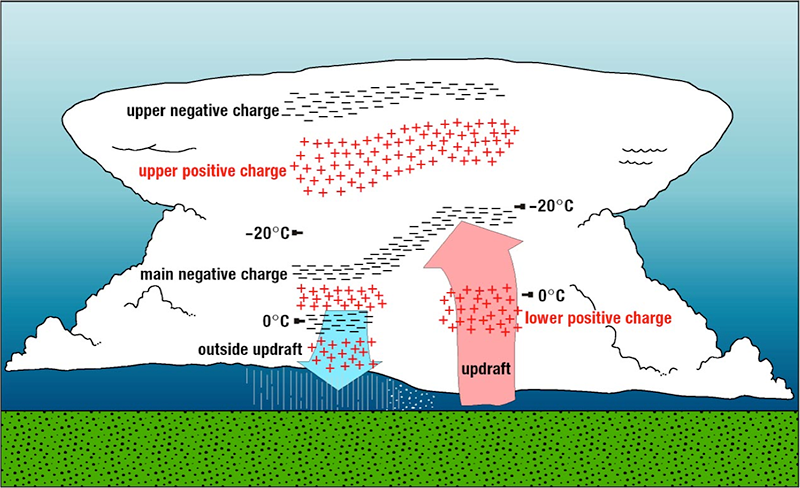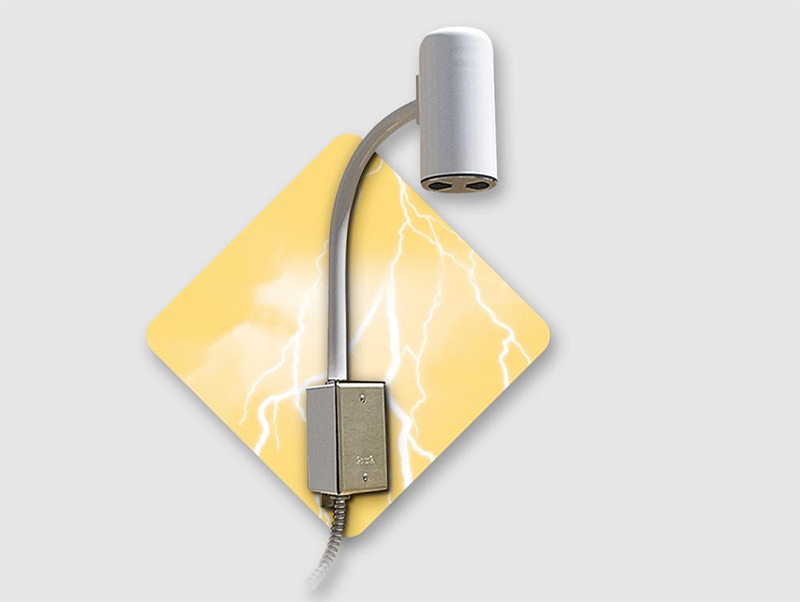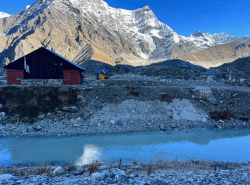Climate
A lightning-prone country, Nepal has tried technologies to detect lightning but failed to make their full use thanks to political and bureaucratic reasons.
Nepal ranks fifth in terms of lightning fatalities per million people, only behind four African nations.
Since June 15, lightning strikes have killed 30 people in Nepal, according to the Government's Disaster Risk Reduction (DRR) Portal of the government.
With an annual count of 100 deaths, with double that number of injuries, due to lightning, Nepal shows up on global charts of deaths by lightning strikes. Yet the news receives low public notice.
Lightning strike survivors have shared experiences which may sound like fable to the rest of us.
Bishnu Gautam, one of the survivors, recently shared his story with NepalMinute.
Science behind
Now, what causes the deadly thunderbolt? Scientists are still working to uncover the science behind it. Yet a lot has been learned.
Thunderbolts are the discharge of static electricity generated in the clouds, between the clouds or between the cloud and the ground.
The air, an insulator, blocks the flow of electricity at first but after a certain stage in its build-up, call it a potential, the air starts to conduct electricity, in a phenomenon called dielectric breakdown, giving birth to lightning.

A flash of lightning may look beautiful from afar or from the International Space Station, but it is scary and deadly for those falling in its line of strike.
Recorded data have shown the temperature reaching between 20,000 degrees Celsius and 30,000 degrees Celsius, up to five times hotter than the surface of the sun. This energy is enough to vaporise a person in a direct hit. Fortunately, the lightning mostly does not strikes with that amount of energy.
According to US Government’s National Oceanic and Atmospheric Administration (NOAA), a typical lightning flash is about 300 million Volts and about 30,000 Amps.
A typical Nepali household current is 220 Volts and 15 Amps.
Thunderbolts in Nepal
Nepal’s topography with steep gradient is unique, in the width of nearly 150 kilometres, the elevation changes from 59 metres to 8,849 metres.
This abrupt change in the elevation, according to different studies, makes the weather cool down quicker moving northward, condensing clouds, which causes a lot of lightning near and around the foothills of the Himalayas, eventually increasing the fatalities.
The statistics in a recently published academic paper entitled ‘Lightning threats in Nepal: occurrence and human impacts’ by atmospheric physicist researching on lightning as well as chairman of South Asian Lightning Network (SALNet), Dr Shriram Sharma, and his team, show the central and south-eastern regions of Tarai experience more lightning than other regions; while, the Himalayan region experiences little to no lightning.
The paper also shows lightning occurrences and fatalities are concentrated in the pre-monsoon and monsoon months.
Detection and Forecasting
Dr Shriram Sharma says the detection and forecasting are both possible and doable, albeit a little difficult due to peculiar terrain.
According to him, detection is easier than prediction and Nepal has already made some attempts to do this. “In 2010, we brought a ‘lightning stroke detector’ from the USA that can triangulate (find using at least two other similar devices) the location of lightning, by being connected to the global network of such devices.”
He says the device is still in the Nepal Academy of Science and Technology (NAST): “It went offline a few years ago and out of service, just because NAST pulled out the dedicated internet, which the device needs.”
The detector could determine the lightning types and the location within 2 seconds, the device would have been useful for ‘now casting’, which is the prediction of the weather events a few hours prior in other places relative to the current place.
Currently, the Department of Hydrology and Meteorology (DHM) has nine ‘lightning detection network stations’ in airports spread out across the country.
Dr Sharma said: “These devices are designed to record electromagnetic disturbances in the environment to detect lightning events. Placed in airports, they mostly record the electromagnetic noises, so they don’t work as intended. They are basically defunct.”
In terms of forecasting, it would have been much easier if all these devices were functioning.
“For example: if we could detect that lightning causing clouds are moving eastward from the west, we could warn people in east in advance, and that is what we call now-casting, ” Sharma said.
“This requires data but DHM is very reluctant to give free access to data; even for research, we are compelled to pay for the data.”
According to Sharma, there is a technique based on ‘field mill’, a device that reacts to an electric field, which can predict lightning with reasonable accuracy about 15 to 20 minutes in advance.

“Fifteen minutes will be sufficient time to run for shelter,” he said. “But one device can cover a 10-kilometre radius, which means it needs a lot of investment and dedication for a large coverage.”
The other technique, employed in western nations, which can predict lightning, days in advance, is model-based prediction.
However, Nepal is not in a position to train and apply the technique just yet, Sharma said: “We need a lot of meteorological parameters, but Nepal started to collect these data fairly recently.”
Commenting on the statement made by Dr Sharma on the lightning detection network remaining defunct, Senior Meteorologist Shanti Kandel at the Department of Meteorology and Hydrology (DHM) said: “We aren’t getting any data from the network currently because the network is in maintenance phase. At other times we were able to use the network with limited success.”
Senior Meteorologist at Instrument Section of DHM Shiva Nepal said: “It is true, we were receiving a lot of noise from electronic devices at airports, and now we are relocating the detectors out of airports. With few detectors already relocated, we haven’t seen the noise level go down.”
He added: “Experts are needed for further assessment and calibration.”






